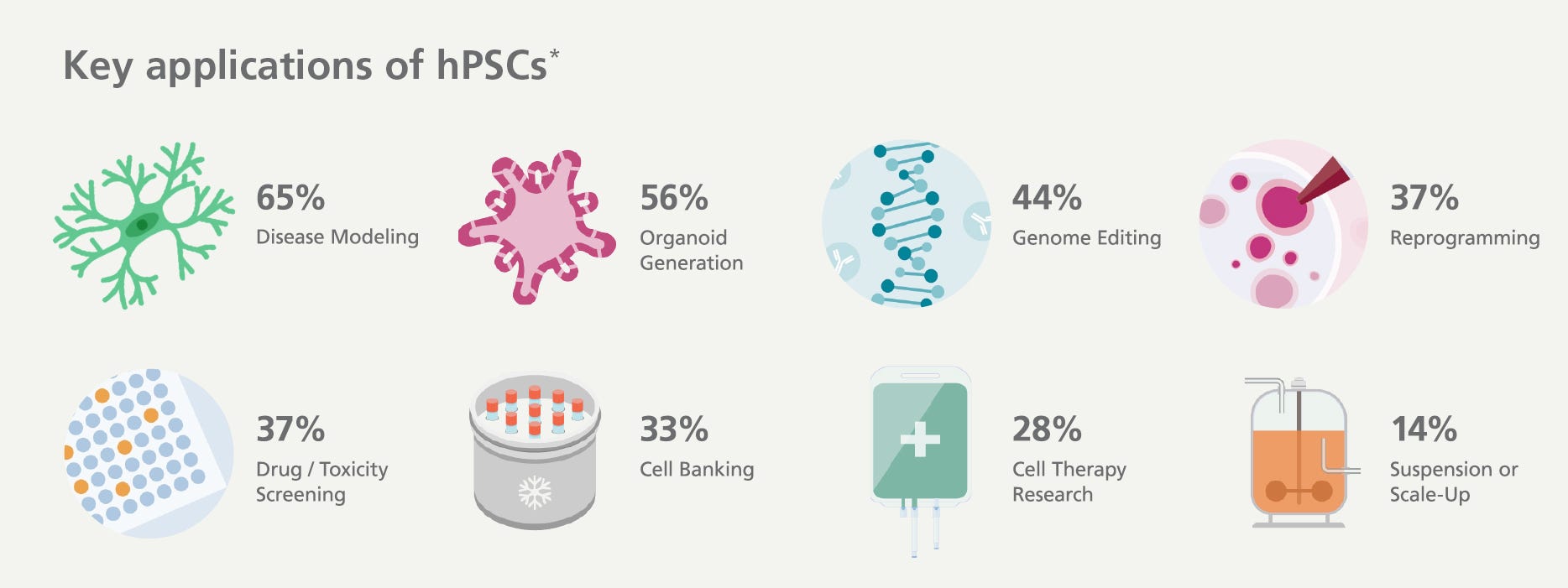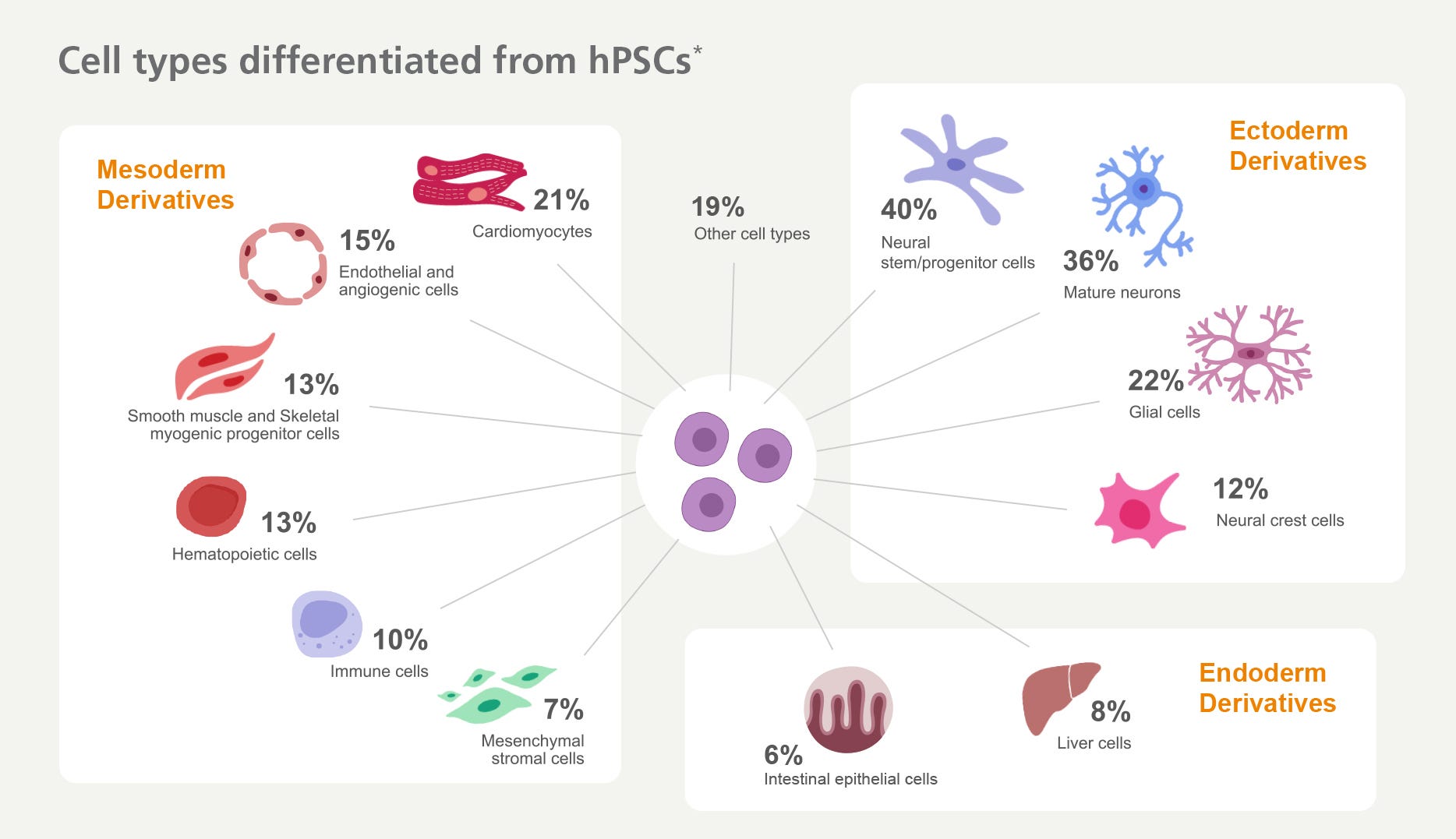调查报告:多能干细胞研究现状如何?
hPSC 研究领域的见解和趋势
人类多能干细胞 (hPSC) 系如今在全球范围内广泛应用。在您的实验室中,您可能依赖 hPSC 来揭示人类发育的奥秘、研究药物的作用,甚至将其作为深入研究人类疾病的工具。随着围绕这些细胞的知识体系不断增长,追踪最佳实践(包括处理和信息报告的标准)变得越来越具有挑战性。这些差异会对研究结果的可靠性和可重复性产生后续影响。了解 hPSC 研究的现状是迈向共同努力改进该领域的第一步。
2020 年初,STEMCELL Technologies 开展了一项调查,邀请科学家帮助分析 hPSC 领域的需求和挑战,并收集关于如何提高可重复性的建议。以下是调查报告的重点内容,分享了来自 550 多位*科学家的调查结果,其中涵盖了一些最有趣的见解和趋势,包括:
- hPSC 的多种应用
- hPSC 研究的不可重复性及其关键因素
- hPSC 质量的最佳实践以及研究人员目前如何评估其细胞的质量
- hPSC 质量控制的障碍
- 研究人员如何检查细胞质量
*注:本次调查涵盖目前在研究中使用多能干细胞的科学家和尚未开始研究的科学家。对于尚未开始研究的科学家,问卷中省略了关于当前干细胞维护培养实践的问题,因此共有480位受访者参与了调查。回复主要来自北美和欧洲,8%来自亚洲,其他地区则不到2%。
hPSC 的应用范围十分广泛
涉及 hPSC 的研究范围涵盖从基础研究到临床研究。研究人员积极参与知识共享,85% 的受访者计划在未来两年内发表研究成果。研究人员也在努力开发新模型、启动临床试验并为新技术申请专利。

更成熟的神经和心脏细胞模型在混合模型中得到了很好的体现。然而,新的方案正在不断开发,以扩展hPSC的潜力,使其能够模拟越来越多的细胞类型。受访者列举了胎盘细胞、视网膜细胞、内耳毛细胞等等。

*参与者可以选择多个答案。百分比代表选择每个答案的受访者占比。
不可重复性仍然是个问题吗?大多数人回答说“是”。
When respondents were asked if reproducibility is a major concern in the field, 85% of researchers agreed or strongly agreed. To learn more about why, we asked about the different factors that might contribute to irreproducibility, and the most frequent responses were cell line variability and inconsistent or incomplete reporting. While other factors were rated as less critical, the vast majority of respondents still agreed that each factor contributed to some extent.

Managing cell line variability during maintenance can be tricky, especially as most labs reported maintaining between 5 - 30 cell lines at any given time, with some respondents reporting over 500. While variation between cell lines is to be expected, proper reporting and standardized quality control measures can help limit variability and ensure that relevant findings are shared. To find out which quality checks were being considered as “critically important”, read the full report.
hPSC 质量最佳实践滞后
To ensure the quality and consistency of downstream applications, it is critical to properly characterize your cell lines. A clear majority of respondents consider various cell quality attributes such as pluripotency, gene and marker expression, genomic integrity, and cell line identity as critically important. However, many people are only performing a subset of screening tests. These tests may not be sufficient to determine the quality of hPSCs.
To see more data and gain deeper insights on the barriers to hPSC quality control and how you can overcome them, download the full report.







